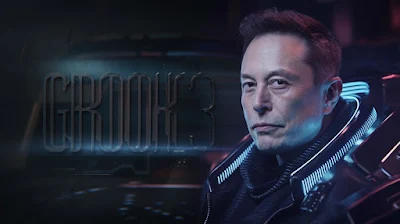Introduction
The Planetary Parade 2025 has given astronomers and space enthusiasts an extraordinary view of the solar system. For the first time in history, an image has been captured featuring Earth and all seven other planets in one frame. This rare celestial alignment is a breathtaking event that has not been observed since 1982.
Renowned astronomical photographer Josh Dury, also known as "Starman," successfully captured this panoramic image from Mendip Hills, Somerset, UK, on February 22, 2025. Using advanced astrophotography techniques, he managed to include Mercury, Venus, Mars, Jupiter, Saturn, Uranus, Neptune, and Earth in a single composition.
The Science Behind the Planetary Parade
What is a Planetary Parade?
A planetary parade, also known as a planetary alignment, occurs when multiple planets line up on the same side of the Sun. These alignments can range from three to eight planets being visible in the sky at once. While smaller alignments are relatively common, full planetary alignments are rare, making the 2025 event an extraordinary spectacle.
Frequency of Planetary Alignments
- Three-planet alignments – Occur frequently, often multiple times a year.
- Four-planet alignments – Seen every few years.
- Five-planet alignments – Appear approximately every 20 years.
- Seven-planet alignments – Rare, occurring only a few times a century.
- Eight-planet alignments – Extremely rare, last observed in 1982, with the next one expected in 2161.
How Was the Planetary Parade 2025 Captured?
Equipment Used for the Historic Photograph
Josh Dury used a Sony A7S II camera paired with a Sigma 15mm Diagonal Fisheye lens to capture this rare event.
Photography Techniques
- Panoramic Imaging – A combination of multiple images stitched together.
- Dual Exposure Method – A technique that increases visibility for faint celestial objects such as Mercury, Saturn, and Neptune.
- High ISO and Long Exposure – To enhance details of dim planets.
By cross-referencing his images with celestial sphere maps, Dury confirmed the exact locations of each planet.
When and Where to See the Planetary Parade 2025?
The peak of this alignment will occur on February 28, 2025. During this time, the planets will be visible in different parts of the world, including India, the United States, Europe, and Australia.
Best Places to View the Alignment
- India: Visible in most cities; major planets like Venus, Mars, Jupiter, and Uranus will be visible with the naked eye, while a telescope will be required to see Mercury, Saturn, and Neptune.
- United States: Best viewed from dark sky locations in Arizona, California, and Texas.
- Europe: Ideal viewing spots include Spain, Portugal, and rural UK areas.
- Australia: Best visibility in Western Australia and Northern Territory.
Why Is This Celestial Event Significant?
Astronomical Importance
This alignment of planets offers a unique opportunity for scientists to study planetary movements, orbits, and relative positions. NASA and other space agencies will use this event to collect valuable astronomical data.
Cultural and Historical Significance
Historically, planetary alignments have been linked to myths, prophecies, and scientific advancements. Some ancient civilizations considered these alignments omens of great change, while modern astronomers see them as key moments for celestial studies.
How to Photograph the Planetary Parade 2025?
If you want to capture this event yourself, follow these expert astrophotography tips:
Essential Equipment
- DSLR or Mirrorless Camera – Preferably a full-frame sensor like the Sony A7R IV.
- Wide-Angle Lens – A 14mm or 15mm lens provides the best field of view.
- Tripod – Ensures stability for long exposure shots.
- Star Tracking Mount – Helps follow planetary motion.
- Astronomy Apps – Use tools like SkySafari or Stellarium to locate planets accurately.
Best Camera Settings
- ISO: 800-3200 (adjust based on brightness).
- Aperture: f/2.8 or lower.
- Shutter Speed: 5-15 seconds.
- White Balance: 4000K to 5000K.
Upcoming Celestial Events After Planetary Parade 2025
If you miss this alignment, don't worry—several other astronomical events are coming up:
- Total Solar Eclipse (August 12, 2026) – Visible from North America and Europe.
- Mars Opposition (November 19, 2027) – Mars will be at its closest to Earth.
- Next Seven-Planet Alignment (May 2040) – The next major planetary parade.
Conclusion
The Planetary Parade 2025 is a once-in-a-lifetime event that has been beautifully captured by Josh Dury. This celestial phenomenon provides an exceptional opportunity to witness and document a full planetary alignment. Whether you are an astronomer, photographer, or space enthusiast, this event serves as a reminder of the vast, interconnected universe we live in.
Related Articles:
Stay tuned for more astronomy news and space exploration updates!













.jpeg)







